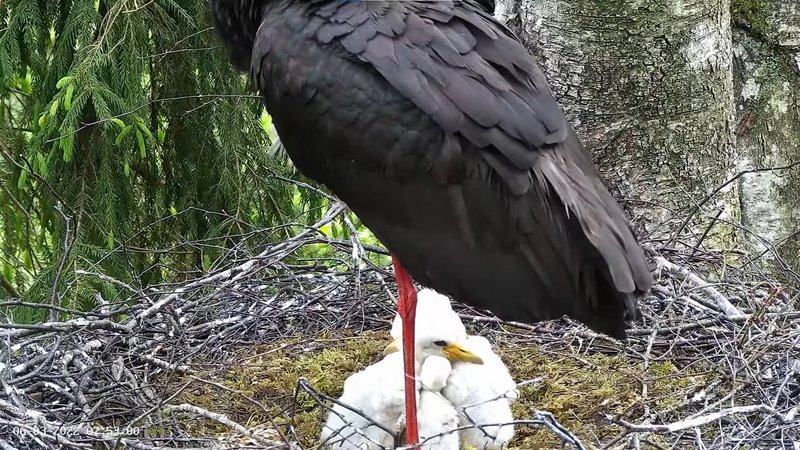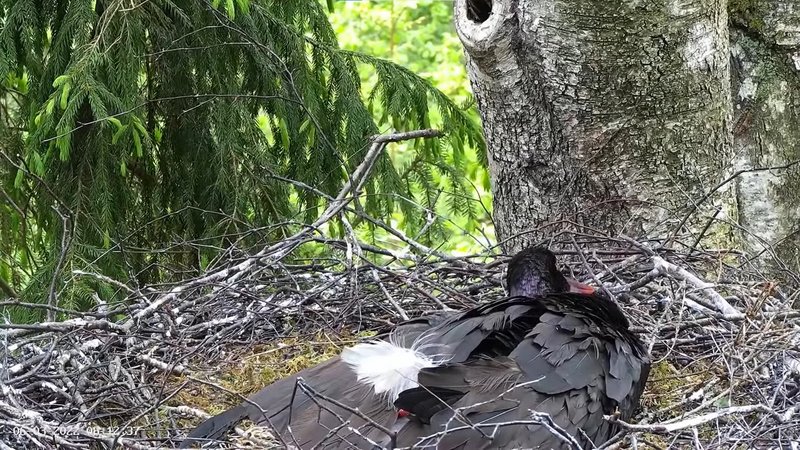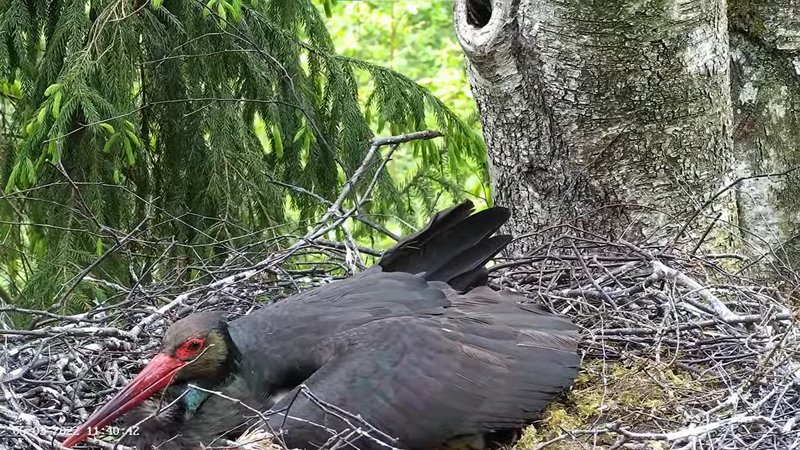Must-toonekurg/2::Ciconia nigra https://youtu.be/Do5wJsjJGgU
Madli wrote: ↑02 Jun 2022, 22:08
MADLI, please, help with translation
KRIITILINE OLUKORD JÕGEVAMAA MUST-TOONEKURE PESAS CRITICAL SITUATION IN THE BLACK STORK'S NEST IN JÕGEVAMAA
the newest info:
https://www.kotkas.ee/uudised/kriitilin ... kure-pesas
GT (without fewv correction)
Just a week ago, we rejoiced at the hatching of the sixth son in the nest of black storks in Jõgeva County. However, today's situation in the nest is the complete opposite.
The last time we saw the male bird Jan in the nest is at half past five in the afternoon of June 1. He has since disappeared. The female Janika stays with the chicks, but
for more than a day and a half without food it is dangerous for the chicks - they are obviously hungry. Until now, small storklets were fed a few hours apart. How much longer will they last?
Even if one of the old birds disappears, the other does not just leave the pups but remains in the nest. Instinct keeps him with the little ones until the second old bird arrives. This has been beneficial for the survival of the species.
Offspring need protection from wind and rain as well as predators. This, of course, until the moment when the survival of the old bird itself is called into question. As long as the old bird is alive, it will always have another year to raise a new litter.
There are many possible reasons for Jan's absence, but we will not speculate. We don't have a good solution in case Jan doesn't return to the nest. If we took the chicks from the nest to raise them under human care, they would no longer become wild black storks. We do not have the experience or technical means to successfully rehabilitate young storks in the artificial environment. Young birds receive the necessary manners for survival from the nesting period. Based on this, they also choose their future place of residence.
Theoretically, it is possible to give Janika a fish to feed her chicks, but how to make the fish available to her. We don't know where he usually looks for food. The territory of the black stork is huge (they also feed for several tens of kilometres from the nest), but for additional food it is necessary to install a fish tank. At the beginning of May, we had a feeding place for black storks just a kilometer from the nest, but the old birds did not visit it for three weeks. Of course, that doesn't mean we won't try again. Will Janika find a place to feed this time?
We have also considered bringing small fish to the nest, but this can only be done when the dam leaves Janika's nest to look for food. If the old bird is frightened out of the nest, it may not return there for a long time, which would further reduce the chances of the chicks surviving. The weather is cool and rainy, the thermoregulation of the chicks is not yet developed. In addition, the chicks are so small that they may not be able to eat the fish they have nested on their own. However, when the opportunity arises, we are ready to act.
What is happening in the nest of black storks in Jõgeva County is hard to bear, but we are monitoring the situation and doing what the Eagle Club can do. The live broadcast from Jani and Jaanika's nest can be seen on the Kotkaklubi channel
https://www.youtube.com/Kotkaklubi and the Nature Calendar forum is also keeping an eye on what is happening. You can find out more about the nesting couple in the Eagle Club news.
.....
today short overview: https://www.ciconianigra.sk/viewtopic.php?p=3794#p3794









